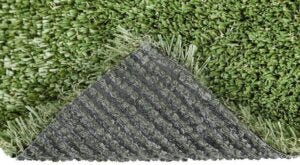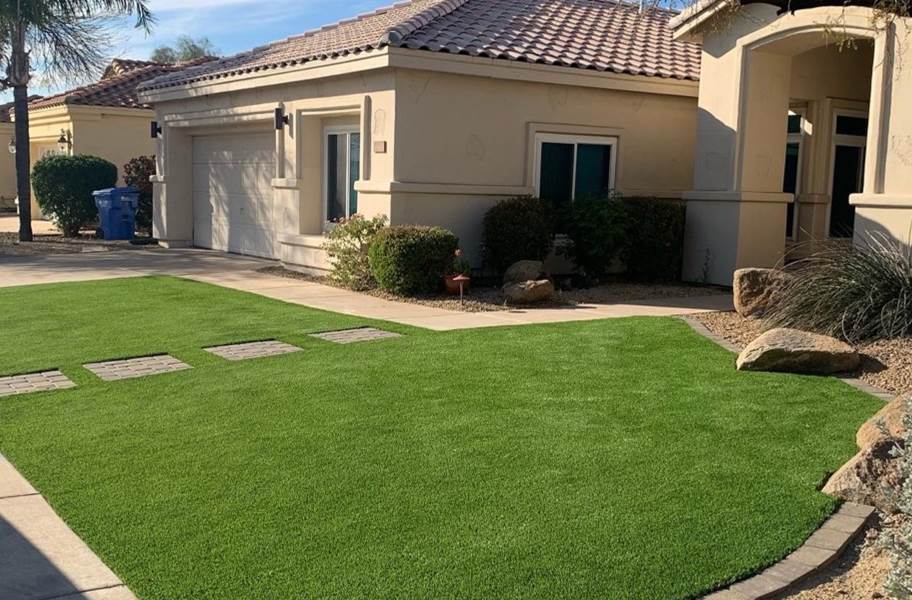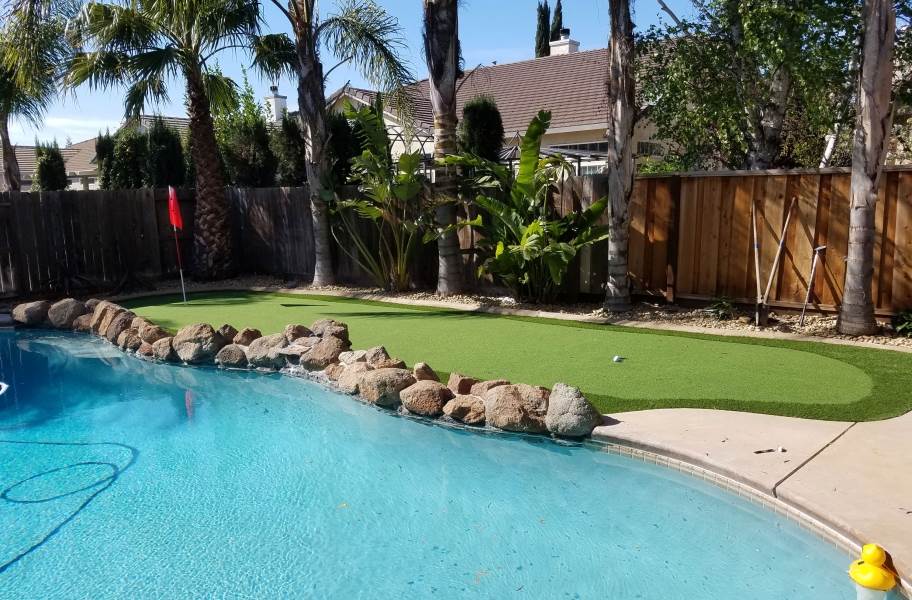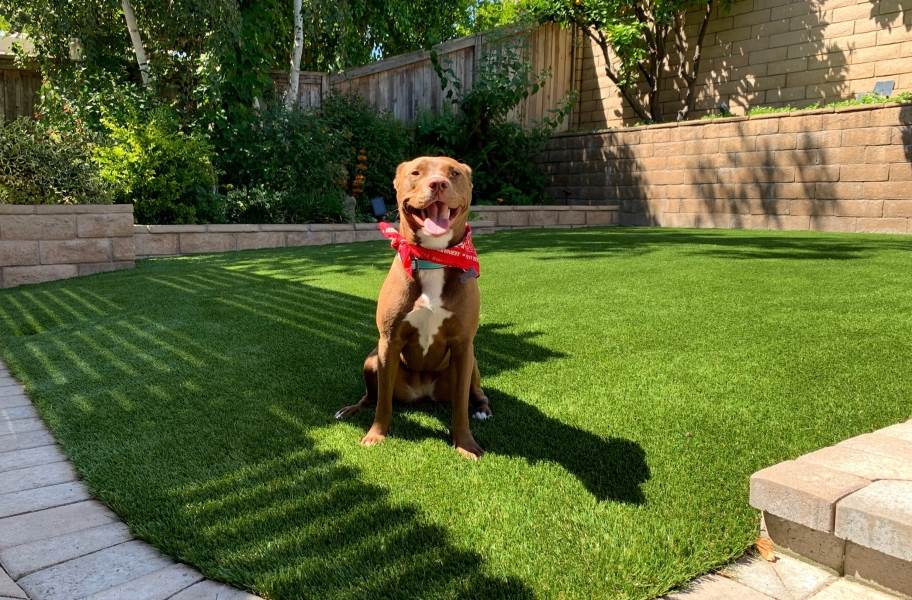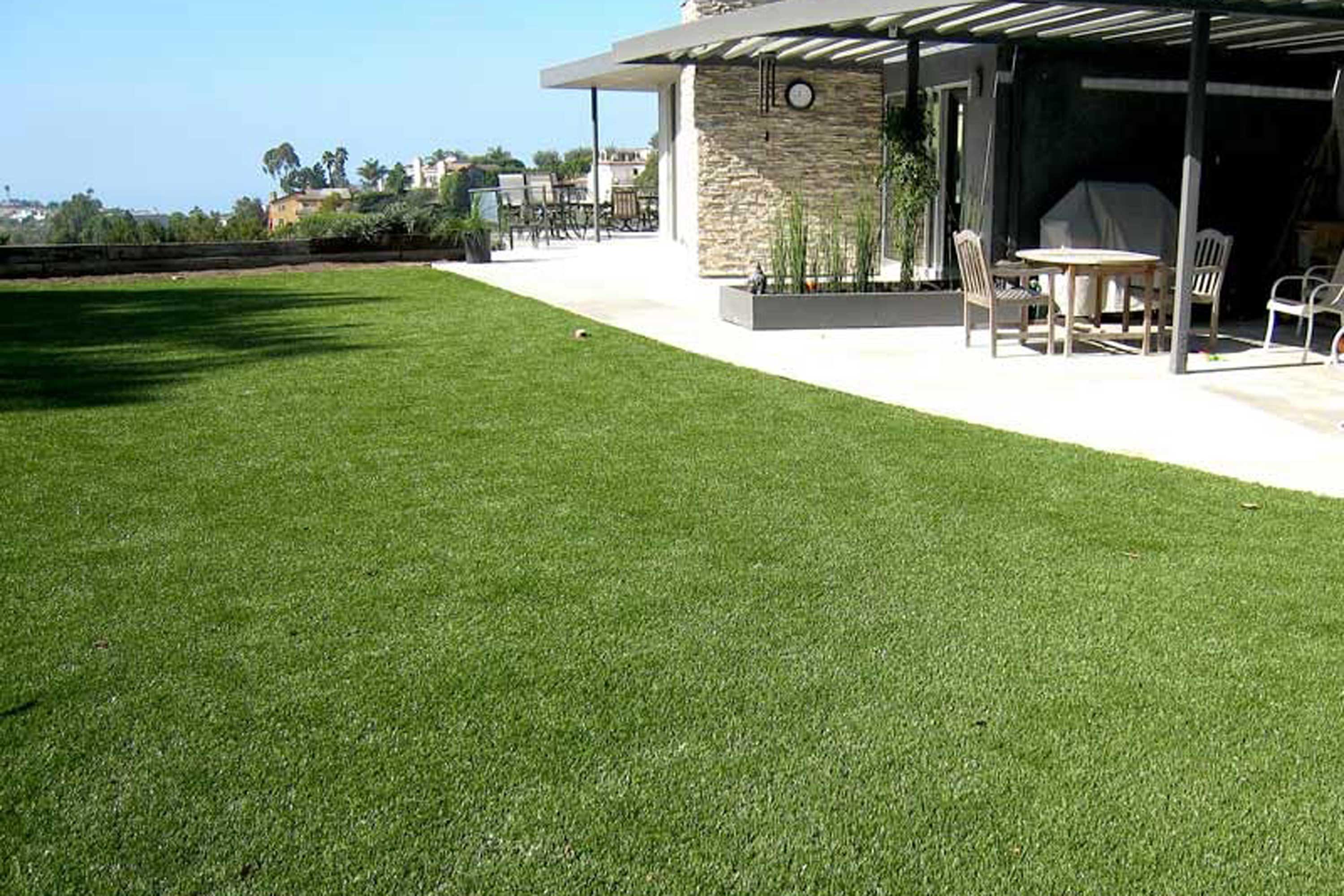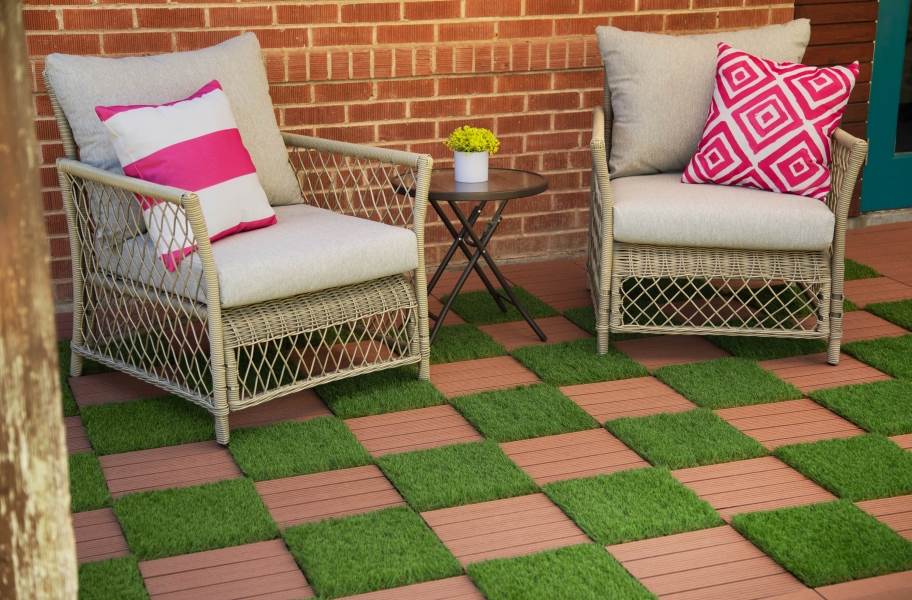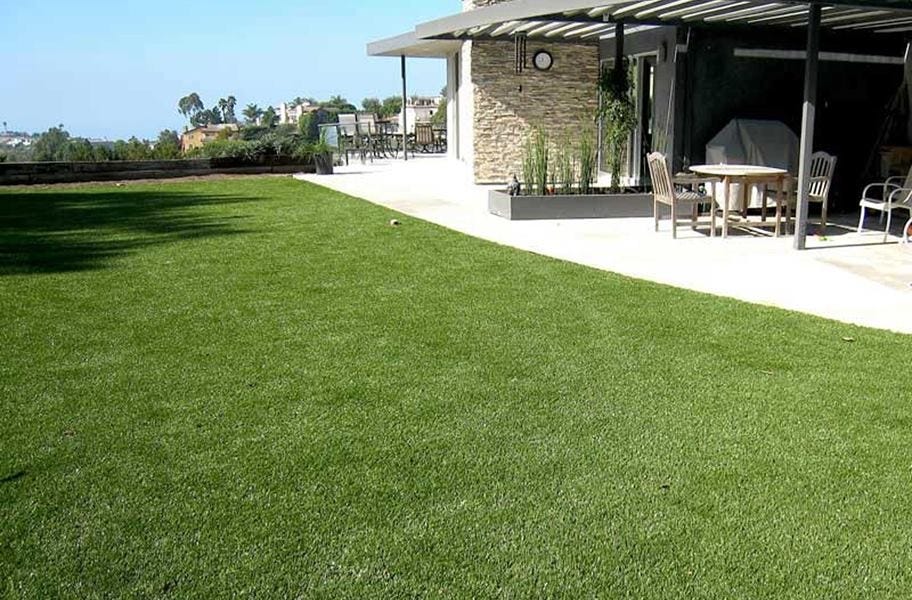
Tired of constant mowing, watering, and battling weeds? Artificial grass offers lush greenery without the headaches. But how long does artificial grass last?
In this guide, we'll dive into the lifespan of synthetic turf and share pro tips to keep your lawn looking fresh for years to come. Whether you're a homeowner seeking a more convenient yard or a commercial property manager prioritizing curb appeal, we've got you covered.
Synthetic Turf Composition
Artificial grass isn't just green plastic; it's a sophisticated blend of materials designed to mimic the softness and resilience of natural turf. The primary materials often used include:
- Polyethylene: Polyethylene blades create a soft texture that resembles natural grass
- Polypropylene: Often used in the thatch layer of synthetic turf for extra cushioning and resilience.
- Nylon: Known for its strength, Nylon is usually used in higher-end products where extreme durability is required.1
These materials are key in synthetic grass's ability to withstand foot traffic, weather changes, and continuous exposure to the sun. High-quality synthetic turf can maintain its color and integrity for years, looking as vibrant as the day it was installed.
Innovations in Turf Technology
New technologies continue to make synthetic turf longer-lasting and even more realistic looking. Some recent advancements in turf tech include UV-resistant fibers that prevent the grass from fading under harsh sunlight, and "cool technology" that reduces surface temperature.
Artificial Grass Installation: How it Impacts Longevity
How long artificial grass lasts doesn't only depend on what it's made of, it also depends on how well it was installed. Proper installation by professionals can prevent a host of issues that might shorten the turf's life. A well-prepared base ensures there is good drainage which helps prevent sagging and uneven surfaces. This is important when maintaining the integrity of the artificial turf over time.
DIY vs. Professional Installation
While installing artificial grass might seem like something that can be DIY'ed, professional installation may be recommended to get the best results.
| DIY Installation | Professional Installation | |
| Expertise and Experience | Enhance your landscaping skills and provide a rewarding experience. | Trained and experienced; understands nuances of installation. |
| Time Commitment | Offer complete control over the timeline, adjusting to your personal schedule. | Usually completed within a day or two, depending on the area size. |
| Tools and Equipment | Need to rent or purchase tools that can be reused for other home projects. | Uses specific tools that ensure efficient and precise installation. |
| Cost Effectiveness | Initial lower costs on labor and may find better deals on materials. | Higher upfront cost and original quote may be increased as project unfolds. |
How Do You Maintain Artificial Grass?
Maintenance is a key aspect of successfully maintaining artificial grass. Although synthetic turf needs significantly less upkeep than natural grass, there are certain to-do's that are essential in keeping it as good as new:
- Regular artificial grass cleaning, such as removing debris and occasional rinsing, helps maintain its appearance.
- For areas that experience higher foot traffic, more frequent grooming may be necessary to keep the fibers upright and prevent matting.
- Proper maintenance also includes promptly addressing small repairs before they turn into larger issues.
- Identifying and fixing minor tears or separations in the seams can prevent further damage, ensuring the artificial lawn continues to look its best.
How to Fix Artificial Turf Tears
Common issues such as minor tears, loose edges, or flattened blades can often be fixed without the need for major replacements, so you can do it as soon as you see the issue. For instance, tears in the turf can be repaired using adhesive and replacement pieces of matching synthetic grass. Regular inspection helps in identifying potential problems early to prevent further tears from escalating and affecting the overall integrity of your artificial turf.
The Environmental and Economic Advantages of Artificial Grass
One of the most compelling reasons to choose artificial turf vs. grass is the environmental benefits the former offers. Synthetic lawns require no watering, which helps in the conservation of water—which is even more important when living in drought-prone areas.
Additionally, artificial grass also eliminates the need for chemical fertilizers and pesticides, reducing the amount of pollutants entering our ecosystems. This makes artificial grass a green choice for those looking to reduce their environmental footprint.2 And if you're wondering whether artificial grass is good for dogs and kids, you can be assured that your family and furry friends can safely enjoy outdoor time.
Return on Investment
The cost-effectiveness of artificial grass also becomes apparent over time. While the initial cost might be higher than that of natural grass, you will save money by not having to:
- Pay excessive water bills
- Buy garden equipment
- Invest in lawn maintenance
Within 15 to 20 years, these savings can significantly offset the initial cost, making synthetic turf a financially savvy option in the long run.
Choosing the Right Artificial Grass for Your Project
Selecting the right artificial grass is important when ensuring you get to enjoy all the benefits it offers. For instance, choosing synthetic turf that comes with UV stabilization means you have a lawn that won't fade and can cope with high temperatures, and having it installed with suitable infill materials means it has good cushioning and stability. These features help maintain the functionality and aesthetic appeal of the turf regardless of environmental conditions.
Navigating the Market
When it comes to purchasing artificial grass, it's also important to choose reputable suppliers and installers. This helps to ensure that the artificial turf performs as expected. Researching and comparing different products, checking reviews, and assessing the track record of suppliers and installers can guide you to make an informed decision. A reliable supplier will give clear information about the turf's:
- Durability
- Material type
- Maintenance requirements
- Warranty
Ready to Make the Switch?
Artificial grass isn't just a smart choice—it's a no-brainer if you're looking for an eye-catching landscape that looks nice for a long time. Imagine never having to water, mow, or fertilize your lawn again, all while saving you on maintenance costs. Whether you're decking out your backyard or upgrading your commercial space, high-quality synthetic turf is the lasting choice.
Ready to roll out the green carpet? Consider artificial grass and give your lawn an upgrade that looks great year-round.



